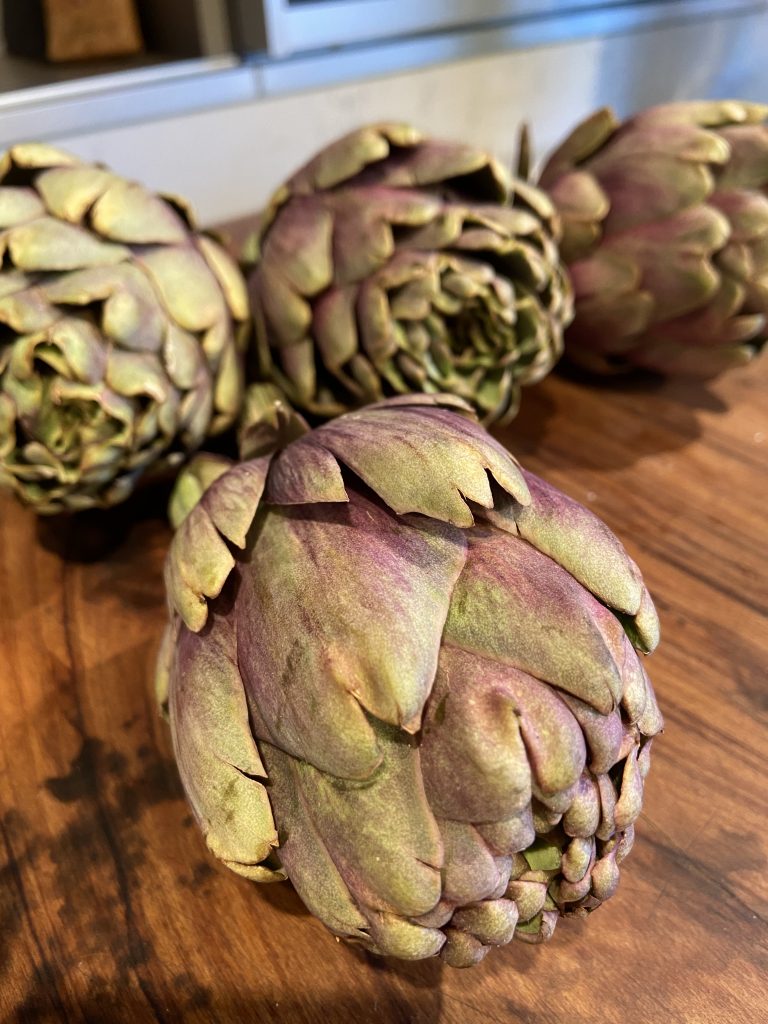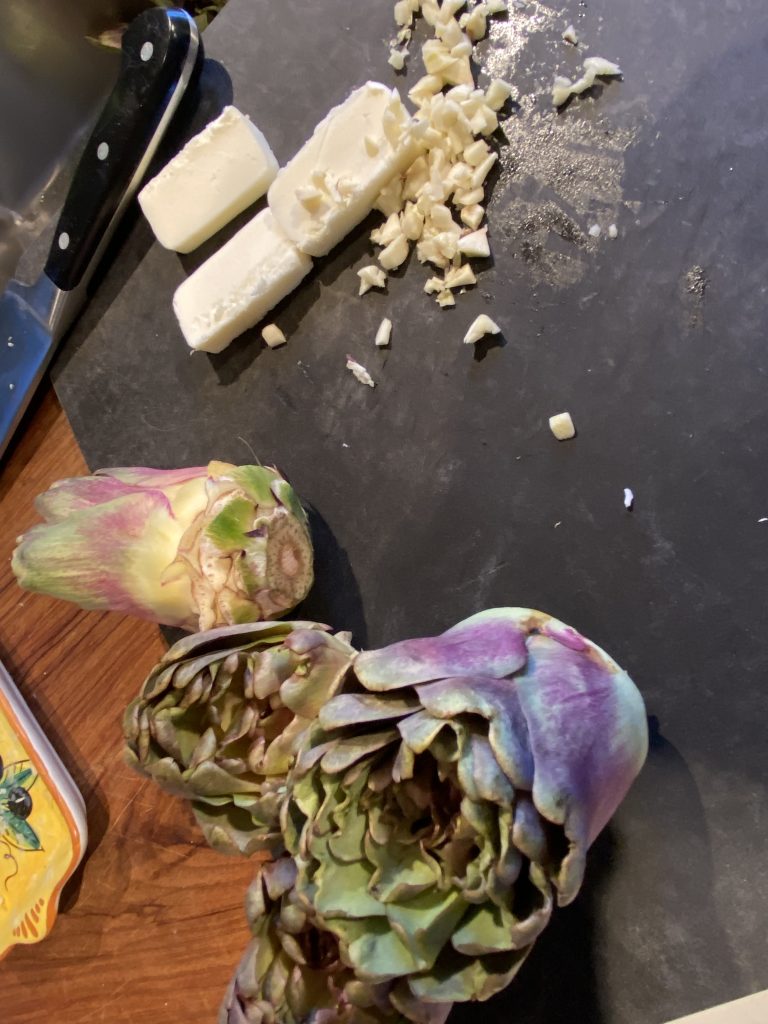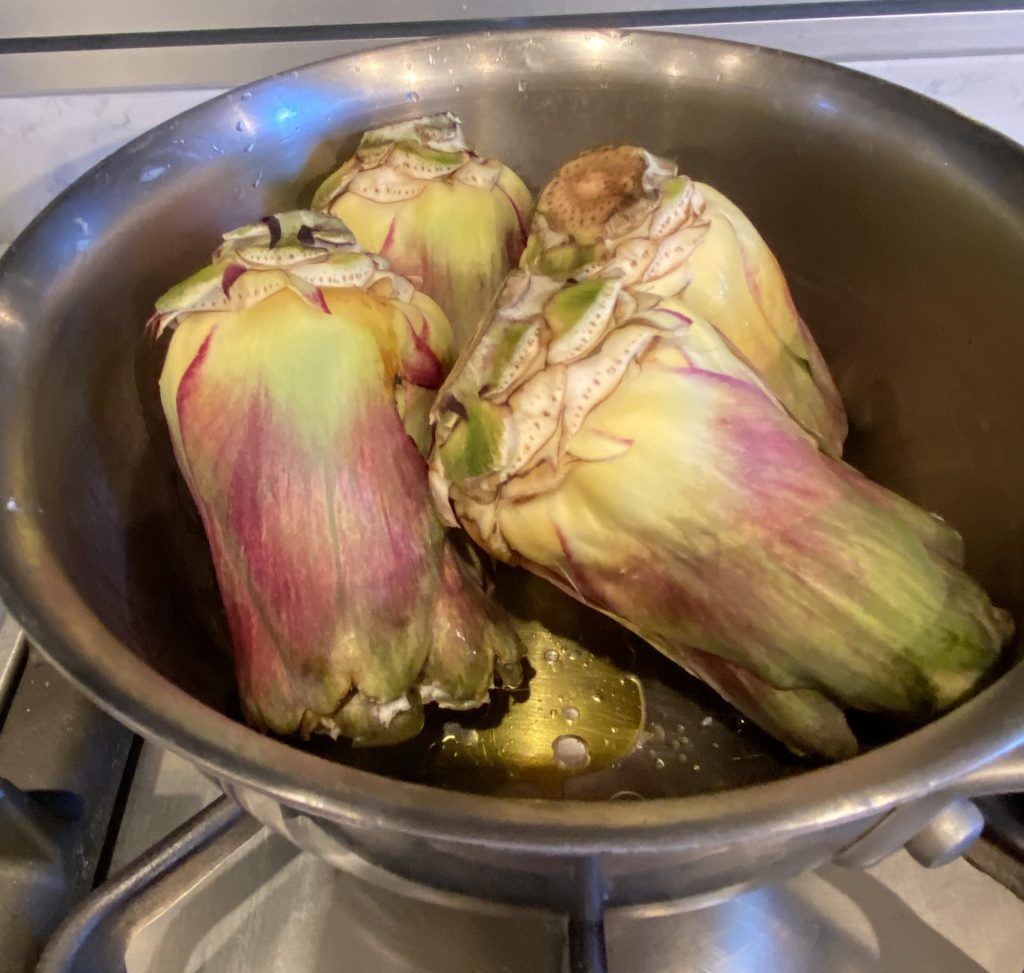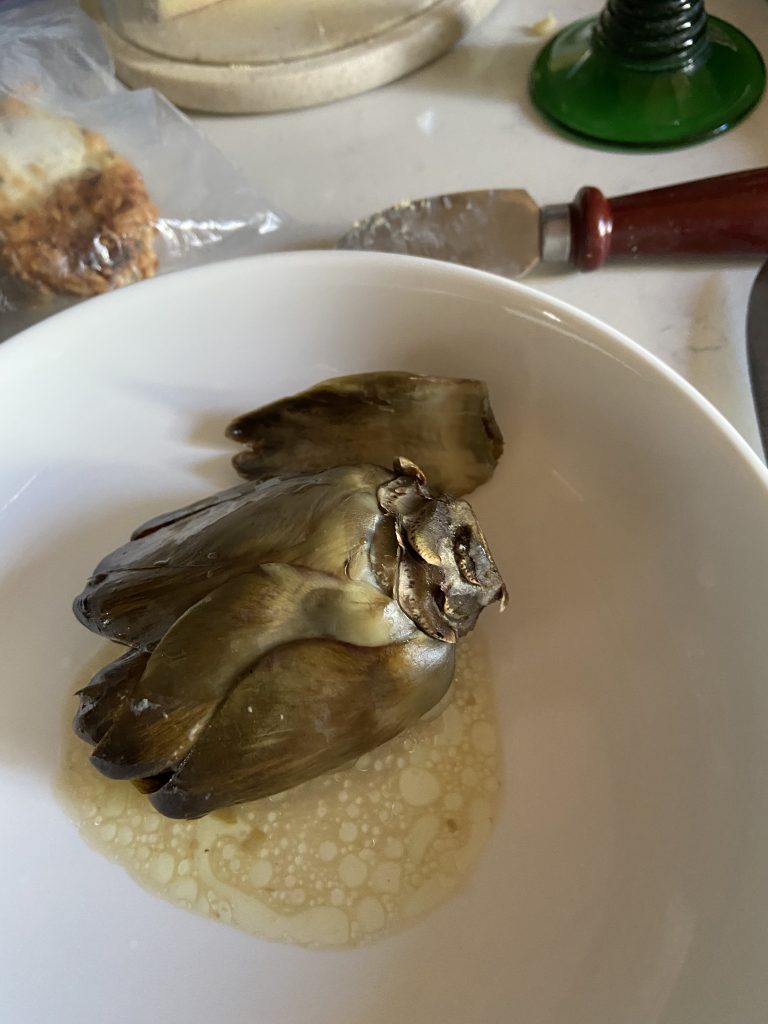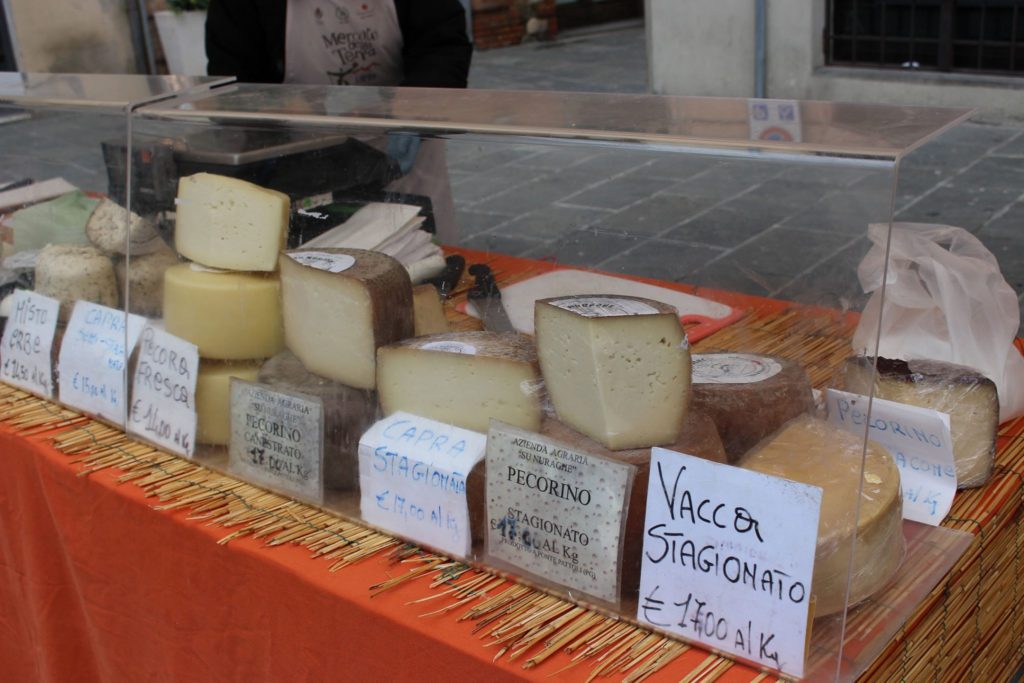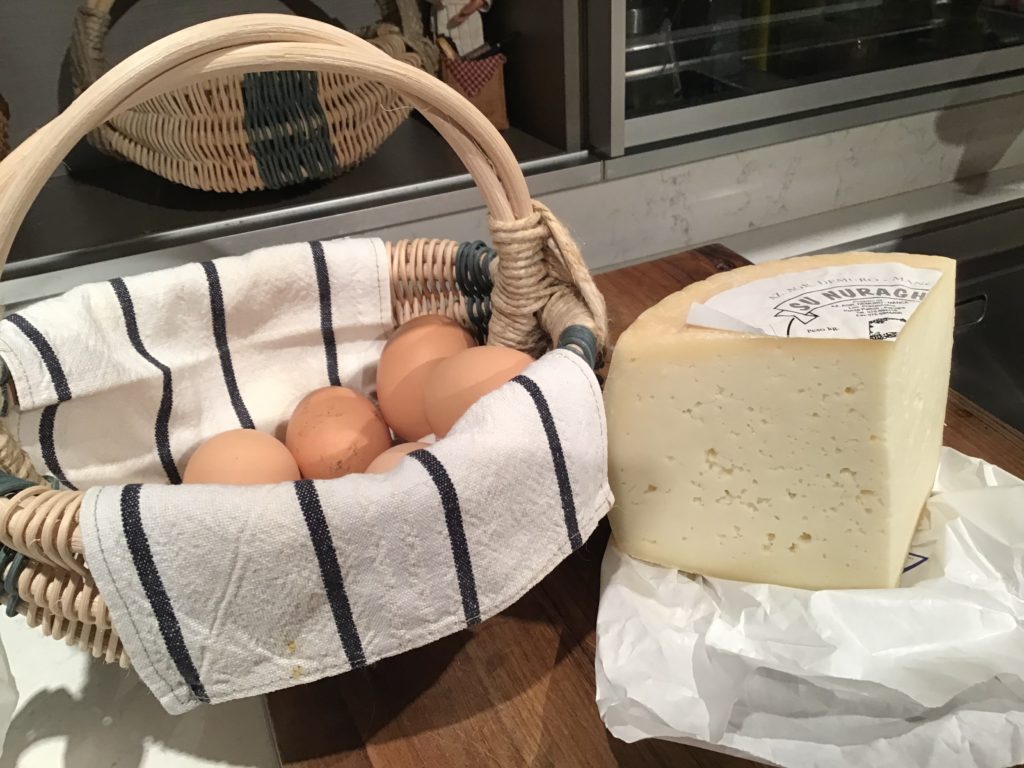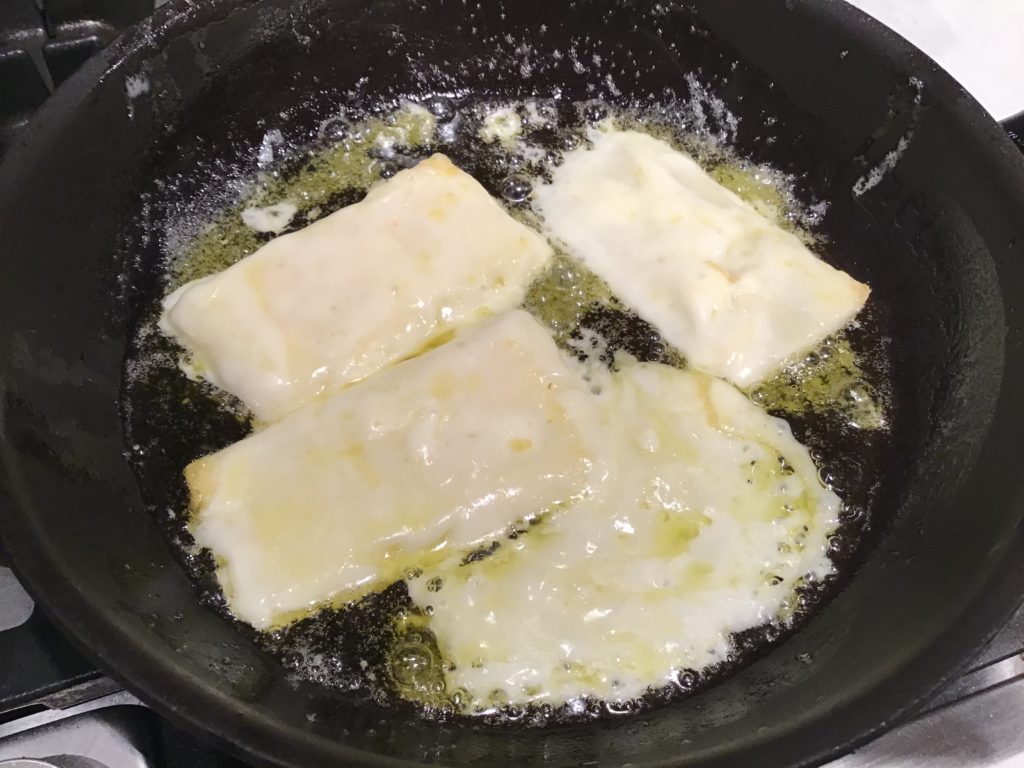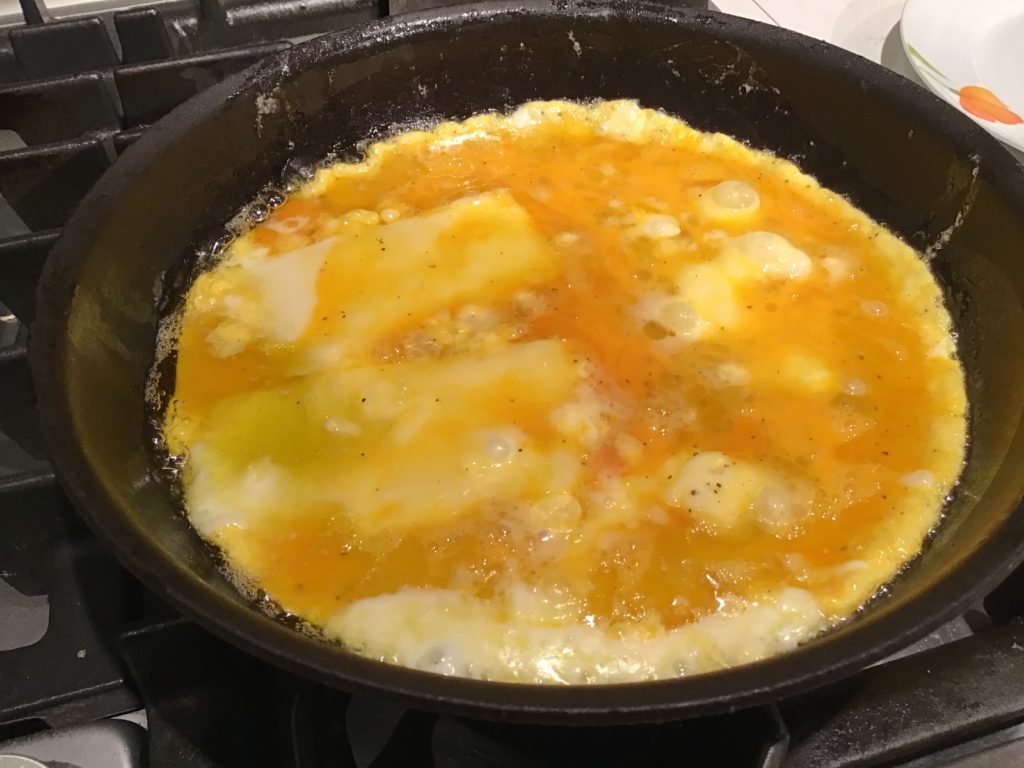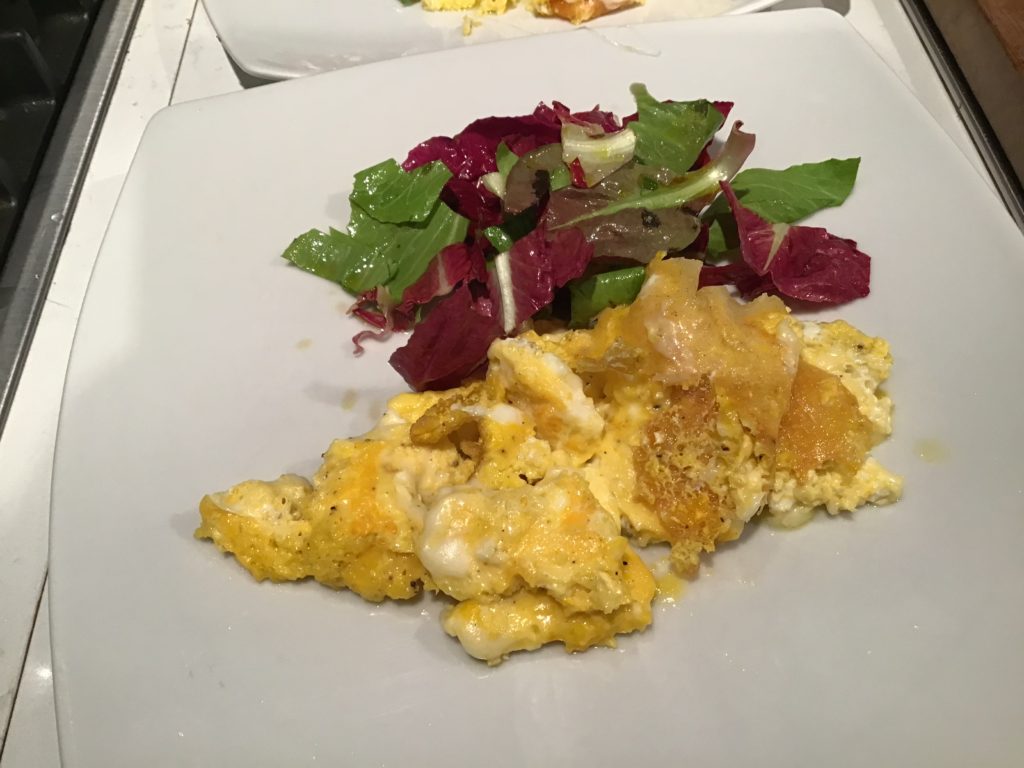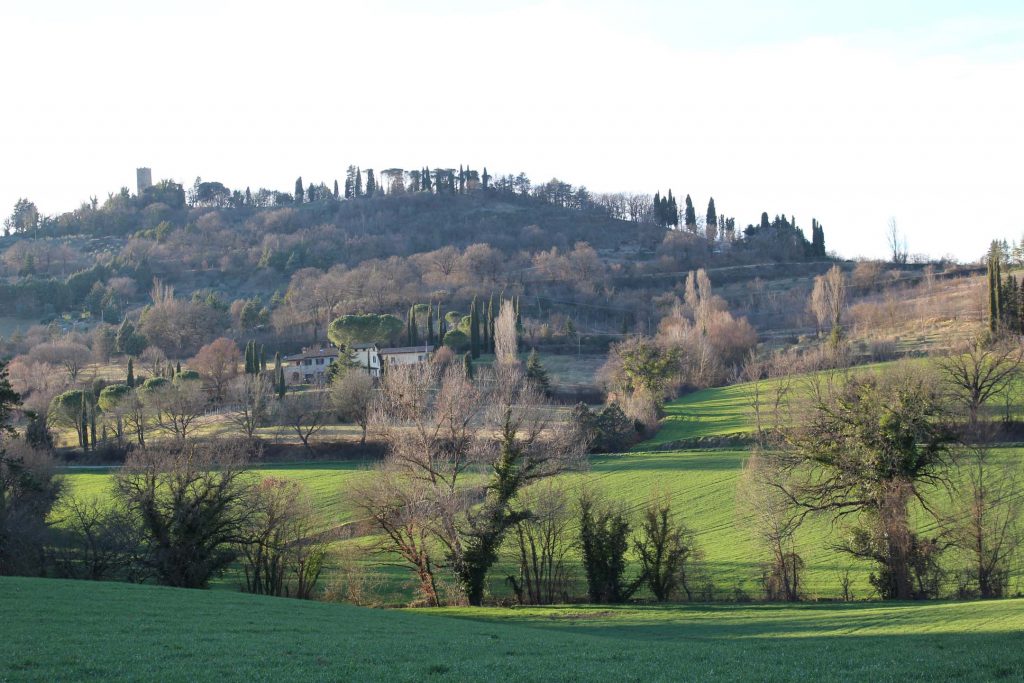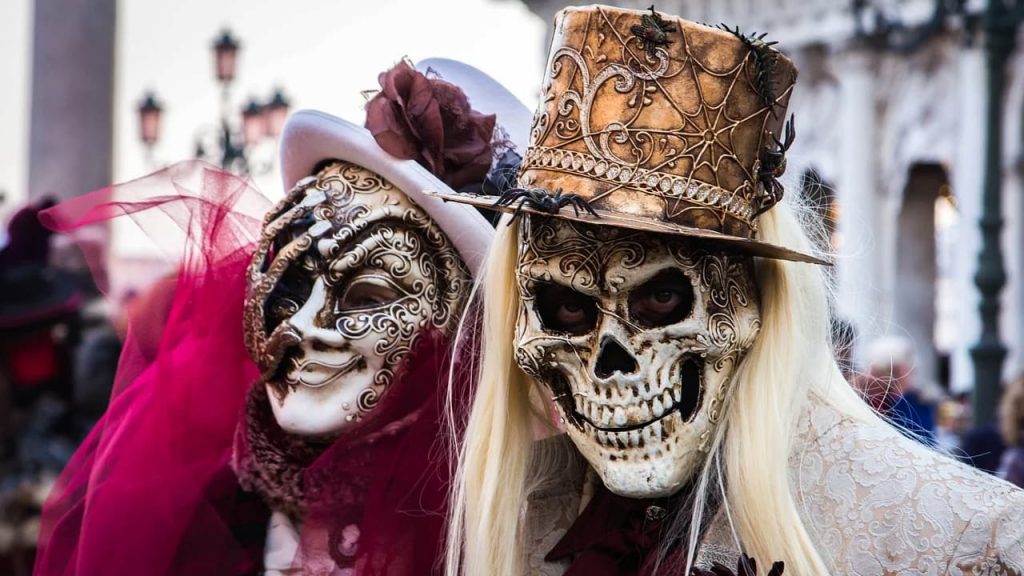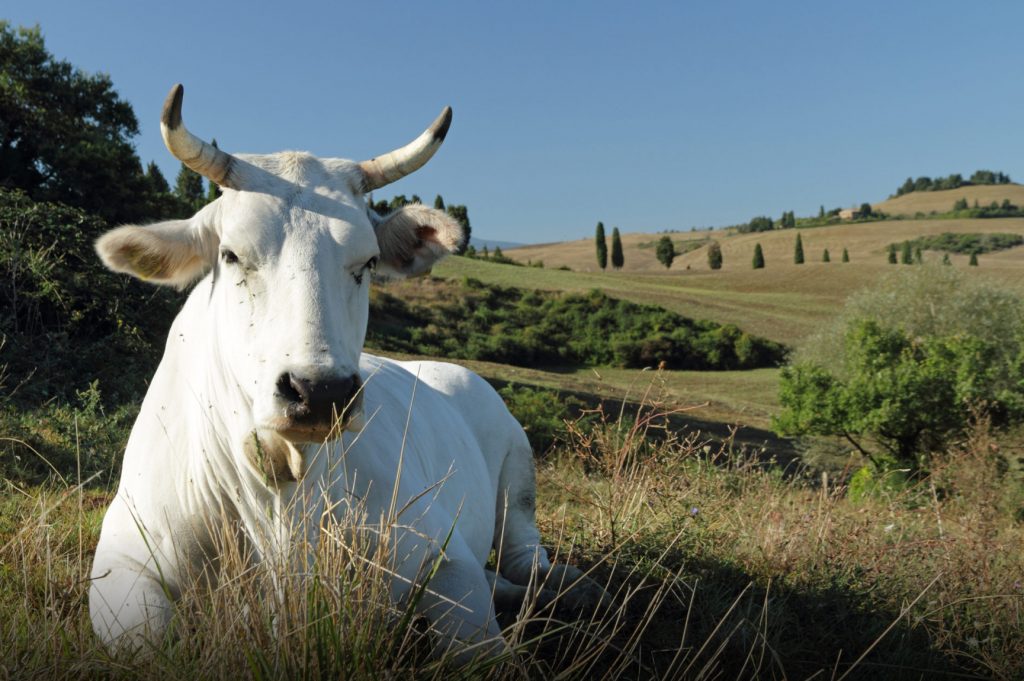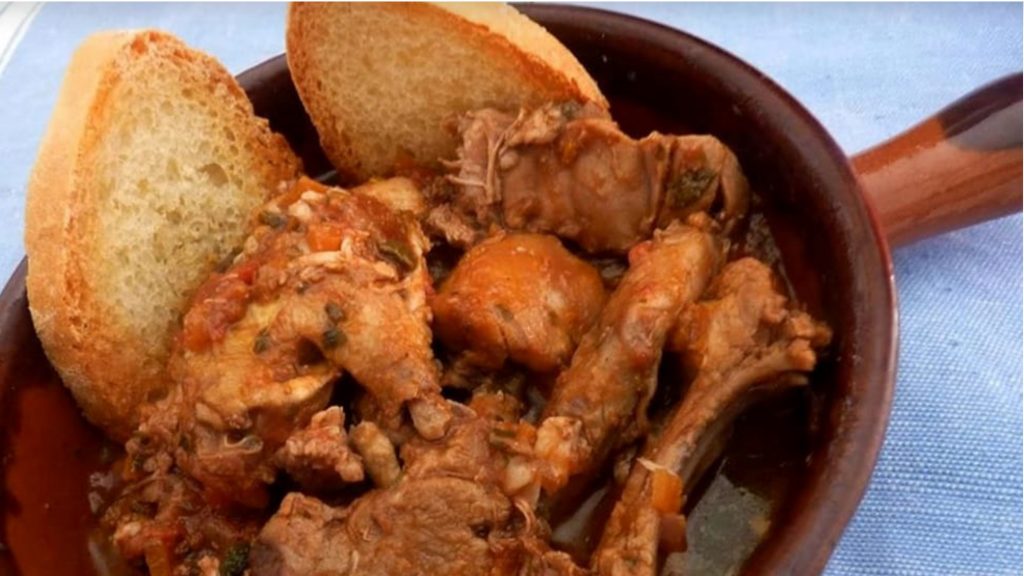May is the season when the hard work on the Umbrian and eastern Tuscan farms begins, the hard work of the tobacco planting. I can see it around in all the valleys now. Not to mention the planting summer and fall crops and the beginning of the harvest of the spring bounty. The book “The Tuscan Year” by Elizabeth Romer, from which I have been excerpting monthly this year, is all about the planting this month. And when this work starts our hero Silvana has to feed sixteen to twenty-four people every day for Pranzo, lunch. They need a hearty lunch from the hard morning work and to continue into the afternoon and evening. Silvana must serve three courses every day. A pasta, or soup as the primi, a meat or fish as the secondo, and fruit for dessert plus strong coffee to wake everyone up afterwards. Home-made wine is served throughout the meal.
The book spends time explaining that Italians, even farm workers, all have very high culinary standards. It is true. Everyone is a critic. She has a lot to live up to. It is important to balance the meal with different tastes and textures in the courses, and to vary it every day, to keep it interesting.
Fish in Umbria and this part of Tuscany is shipped in from the coasts. But in the area near Lake Trasimeno there are a lot of lake fish. Silvana doesn’t like lake fish. She serves trout from the small river running through their farm or she serves baccalà. Baccalà is salt cod. It has been consumed all over Italy for centuries. Back in the past it was the only available fish in the interior of Italy so it was very important for the mandatory fish on Friday meals. Baccalà served that purpose. It is salt cured and you can buy it just as it is or you can buy it already processed to soften it. Silvana soaks it for 24 hours under slowing running water. I have made it and I just soaked it and changed the water often, every hour or so for at least 24 hours. I thought I would pick a recipe from the book for baccalà which I have actually made and I like.
Take the already soaked fish, about 1 kilo or 2 ¼ lb for six people, 500 grams or 1 lb 2 ozs of potatoes, peeled and sliced into thin rounds, a large tuft of parsley, olive oil, salt and pepper and a little water.
Spread a little olive oil on the bottom of a very heavy and shallow saucepan, then oil and arrange a layer of potato slices, season and trickle on a little more oil. Next sprinkle on an even dusting of chopped parsley, then a layer of baccalà cut into small pieces. Drizzle the oil over the fish, then more parsley and another layer of potato and so on until the pan is full. Add a little water to prevent the fish from sticking to the pan. Let it cook over a very low flame for at least an hour until the potatoes are tender and the fish is cooked through; add more liquid if needed. This dish can also be cooked successfully and more simply in the oven where it will just require olive oil for moisture. To vary the flavor you may put a layer of thin pieces of onion on top of the potato and a layer of tomato slices on top of the fish.
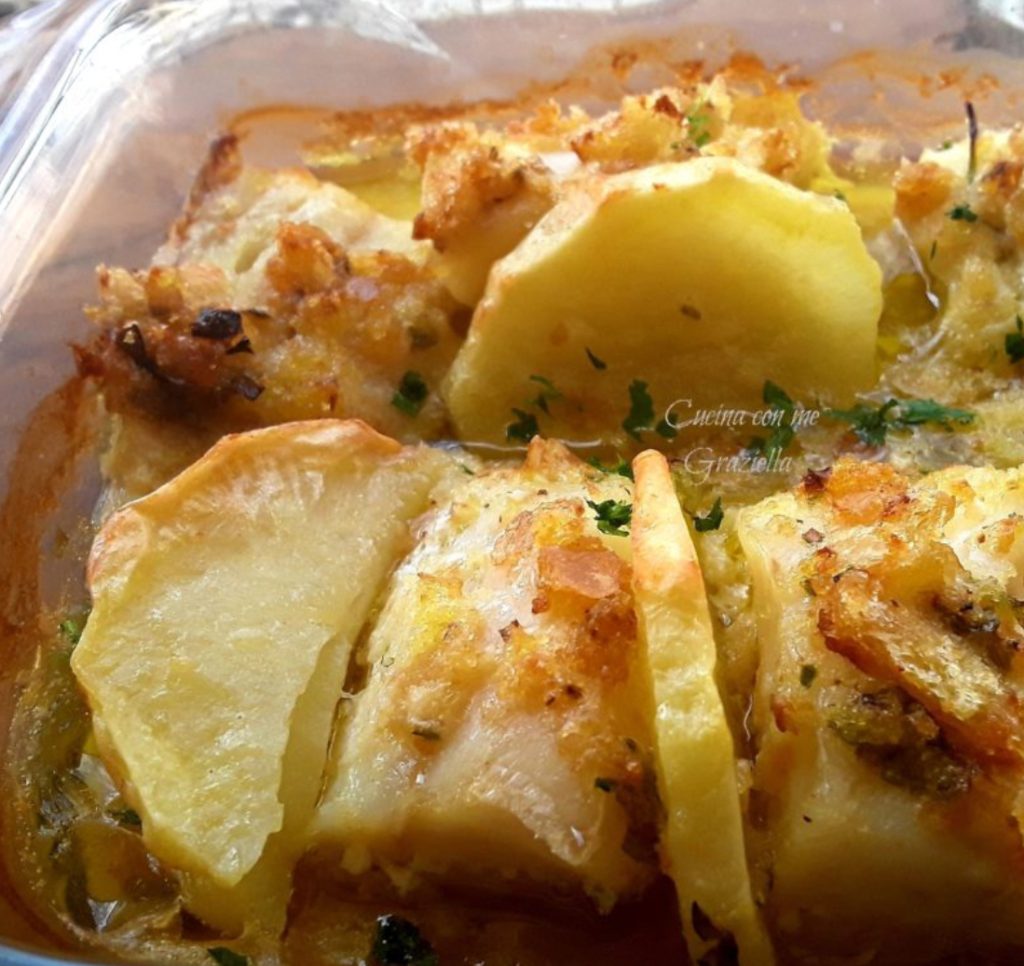
And finally, an excerpt from the end of the chapter. After the work is done and the day’s heat has lessened….
Later in the afternoon Silvana will go out into her garden and do a little work there; she may potter in the small corner set aside for the flowers, mostly dahlias, Sweet William, snapdragons and Michaelmas daisies planted amongst sage bushes and hydrangeas. She goes into the vegetable garden to pick vegetables or salad for supper, and to see what is ripe and what is coming up; the cool late afternoon is also the time when she does her watering. Sometimes she picks up an old sack and a small sharp sickle and wanders off into the fields to pick specially planted vetches to feed her rabbits; they will enjoy the herbage and ultimately the family will enjoy the well-fed rabbits. Occasionally she will take a kitchen chair out into the courtyard and sit in the shade of the house, her hands busy with a pile of mending, while the hens scratch about by the doorway and the old black sheep dog sits companionably by her side.
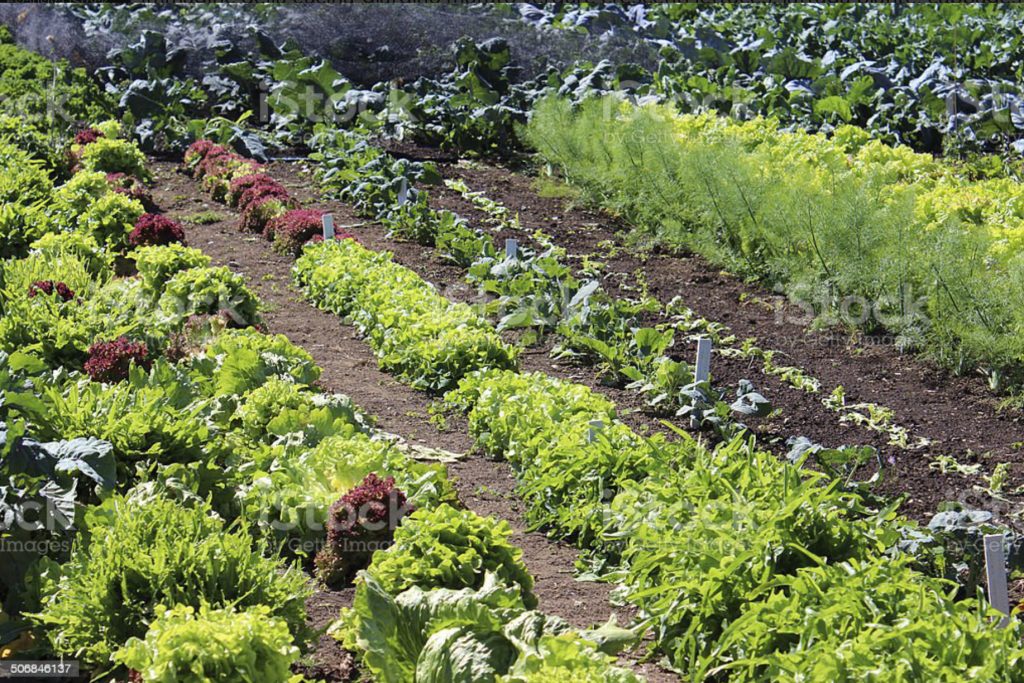
I love the peaceful feeling this little excerpt evokes. The calm, the smells, the sound of birds, as she sits in her garden with the knowledge that the wheel will keep turning and the seasons will repeat along with the rituals. Or we hope it will continue for all time… if we can safeguard our poor world. I would hate to think of the loss of such beauty.
I guess it is nearly time to say goodbye to May and hello to June. Summer is acoming.’ Ciao! Happy Memorial Day to everyone!

